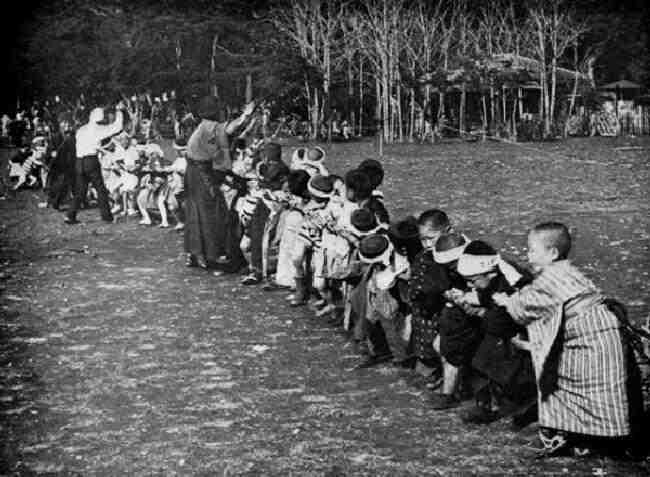
Figure 1.-- Here we see boys wearing traditiinal garments involved in a tug of war in what must be a school activity of some sort. The photograph is undated, but was taken some time before World War II.

We note images showing boys wearing traditional clothes. We do not know how common this was or what the conventions were. We see some images like this one in 1920 with boys wearing traditional clothes. We have no information about the specific garments involved in traditional outfits. We are not sure if this was their normal school wear or a kind of special dress for martial arts like kendo. The images are common enough that some boys obvuiously wore them as ordinary schoolwear. We assume that this was particularly common in rural areas, but we also see urban images. We see boys wearing traditional clothes while involved in various activities. Here we see boys wearing traditiinal garments involved in a tug of war in what must be a school activity of some sort (figure 1). The popularity of traditional clothes also changed over time. It appears to have been much less common by mid-century than it was at the beginning of the century. Another factor is demographic trends. Traditional garments may have been worn as ordinary clothing at rural schools. At urban schools the children may have put on traditional clothing for special days, such as the day for the school photograph. Hopefully our Jaoanese reader will provide more details on traditional garments worn at school.
We note images showing boys wearing traditional clothes. We do not know how common this was or what the conventions were. We see some images like this one in 1920 with boys wearing traditional clothes. hey appear to be common in rural areas, but much less so in the larger cities.
We have no information about the specific garments involved in traditional outfits.
We are not sure if this was their normal school wear or a kind of special dress for martial arts like kendo. The images are common enough that some boys obviously wore them as ordinary schoolwear. We assume that this was particularly common in rural areas, but we also see urban images. We see boys wearing traditional clothes while involved in various activities. Here we see boys wearing traditiinal garments involved in a tug of war in what must be a school activity of some sort (figure 1). At urban schools the children may have put on traditional clothing for special days, such as the day for the school photograph. It looks like before World War II most Japanese children and adults had traditional clothes. People in the cities, especially men and boys, appear to have worn their traditional clothes only for special occassions or at home. We do not have a lot of details about this, but we know this must be case because we notice school photographs with the children wearing traditional clothes even though they are in uniforms in most of the other photographs.
The popularity of traditional clothes also changed over time. It appears to have been much less common by mid-century than it was at the beginning of the century.
Another factor is demographic trends. There appear to be major differences between schoolweear at city and rural schools. Traditional garments appear to have been commonly worn at rural schools because this was the children's ordinary clothing. At city schools children seem to have worn uniforms based on Western styles.
Related Chronolgy Pages in the Boys' Historical Web Site Navigate the Boys' Historical Clothing School Uniform Pages Related Style Pages in the Boys' Historical Web Site
Navigate the Boys' Historical Clothing Web Page
Chronology
Demography
HBC-SU
[Late 19th century]
[The 1930s]
[The 1940s]
[The 1930s]
[The 1940s]
[The 1950s]
[The 1960s]
[The 1970s]
[The 1980s]
[Main Japanese school uniform garments early 20th century chronology Page]
[Australia]
[England]
[France]
[Germany]
[Ireland]
[Italy]
[Japan]
[New Zealand]
[Scotland]
[United States]
[Long pants suits]
[Short pants suits]
[Socks]
[Eton suits]
[Jacket and trousers]
[Blazer]
[School sandals]
[Return to Main school uniform page]
[Introduction]
[Activities]
[Biographies]
[Chronology]
[Cloth and textiles]
[Clothing styles]
[Countries]
[Topics]
[Bibliographies]
[Contributions]
[FAQs]
[Glossaries]
[Images]
[Satellite sites]
[Tools]
[Boys' Clothing Home]
Created: 9:50 PM 8/10/2005
Last updated: 10:15 PM 6/24/2006
